Use Case for Transverse Mercator Projection ✅
Imagine standing in front of a pastry display – the kind you would find in an Italian café, filled with cakes behind glass. In my part of the world it is a Kuchentheke. Not just a place to store and display cakes. It is where they take the stage.
Now picture a Tiramisu cake, viewed through a fisheye lens. The distortion, the curvature, the way the image wraps around the edges – all of it hints at the need for a projection method that can handle such transformations. This blog explores how panoramic projections like Transverse Mercator relate to real-world visual experiences, starting with this sweet example:
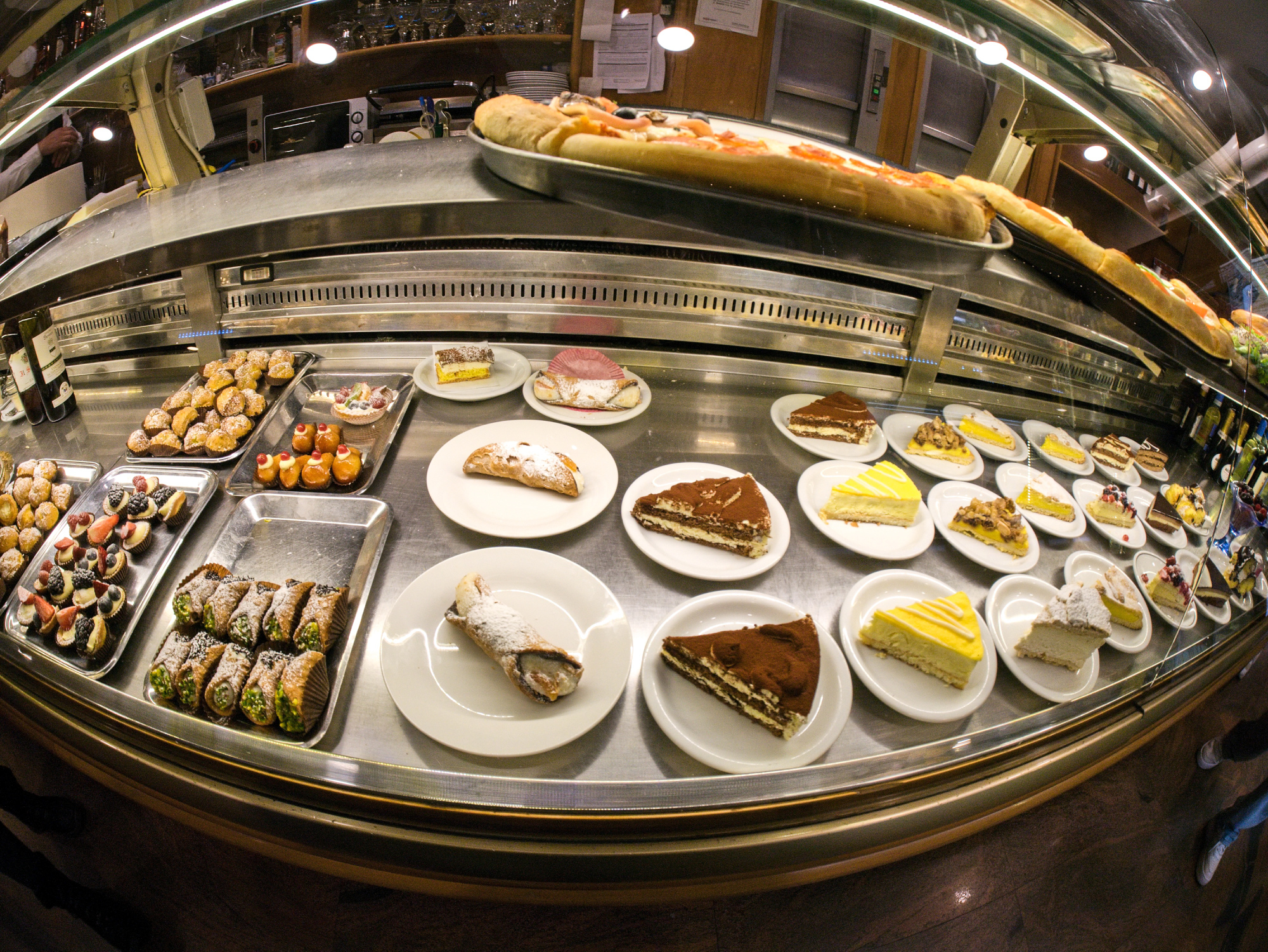
❌ Equirectangular Projection
The equirectangular projection maps latitude and longitude directly onto a flat grid, making it easy to process and display panoramic images. However, with wide fields of view, it introduces noticeable distortion at the top, bottom, and sides. Straight lines curve unnaturally, and objects near the poles or edges appear stretched. While it is widely used for 360° viewers and stitching software, it is not ideal for realistic close-up scenes.

❌ Cylindric Projection
Unlike the equirectangular projection, the cylindrical projection introduces more distortion, especially in vertical lines since the vertical projection is rectilinear. This makes the center of the image appear more prominent, while the sides curve away, creating a tunnel-like effect. It is useful for immersive panoramas, but in wide-angle scenes, it can exaggerate the central area and distort peripheral objects.
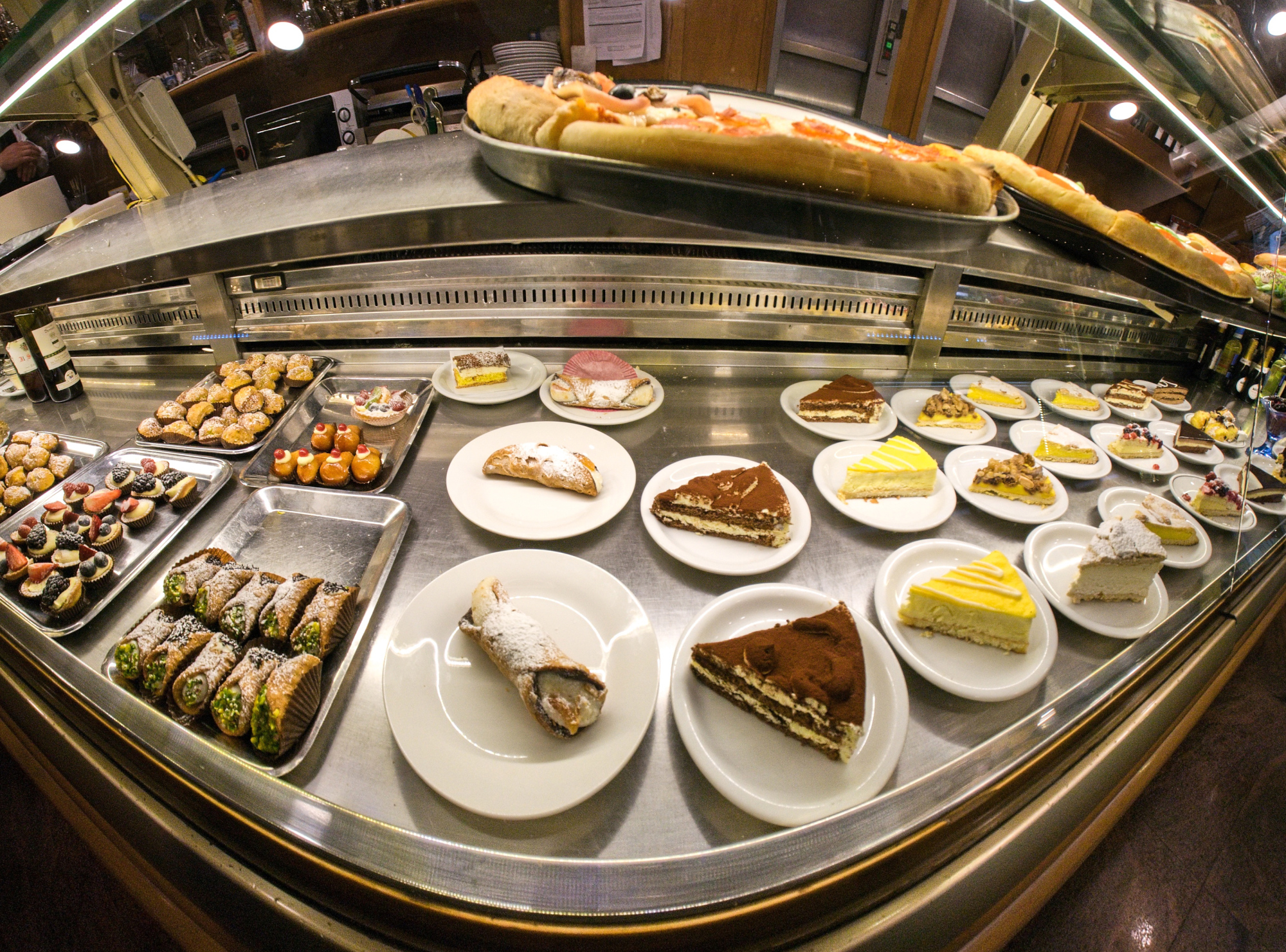
❌ Rectilinear Projection
The rectilinear projection keeps straight lines straight, which is useful for architectural photography. However, when applied to wide-angle panoramic images, it introduces strong stretching at the edges. Objects on the left and right sides appear unnaturally large or distorted, especially in close-up scenes like a pastry display (Kuchentheke) photographed with a fisheye lens.
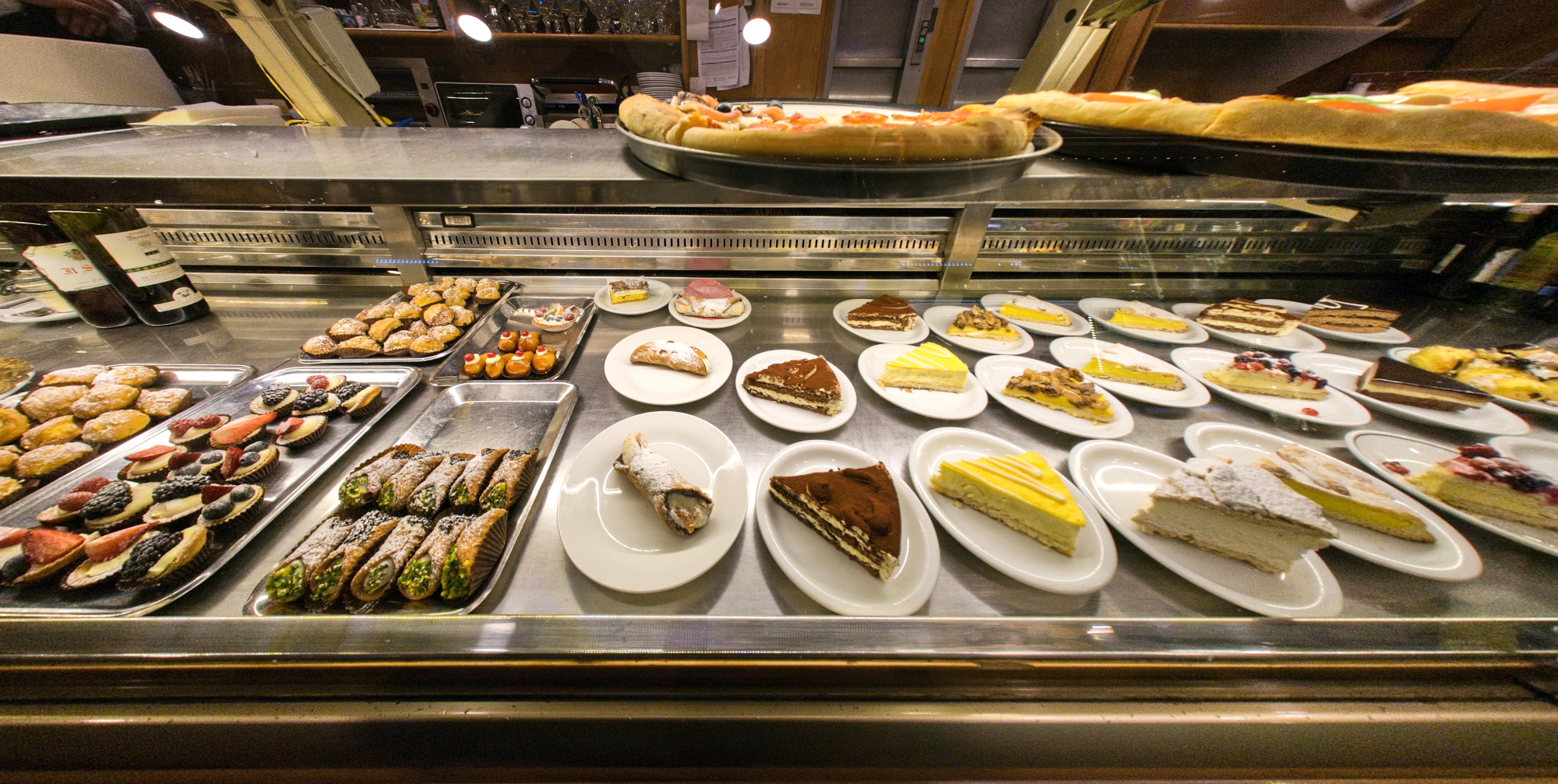
✅ Transverse Mercator Projection
The classic Mercator projection is widely known for its use in navigation maps, where it preserves angles and represents lines of constant bearing as straight. The Transverse Mercator is a rotated variant, where the cylindrical surface is aligned along a central meridian instead of the equator. This makes it especially useful for mapping narrow regions that extend north–south, such as countries or cities, with minimal distortion near the central axis.
In panoramic photography, the Transverse Mercator projection can be creatively applied to emphasize the central vertical axis of an image. It helps reduce distortion toward the edges and provides a more balanced appearance in wide-angle scenes, such as standing in front of a pastry display (Kuchentheke) and capturing it with a fisheye lens. The result is a projection that keeps the center prominent while minimizing distortion on the sides.
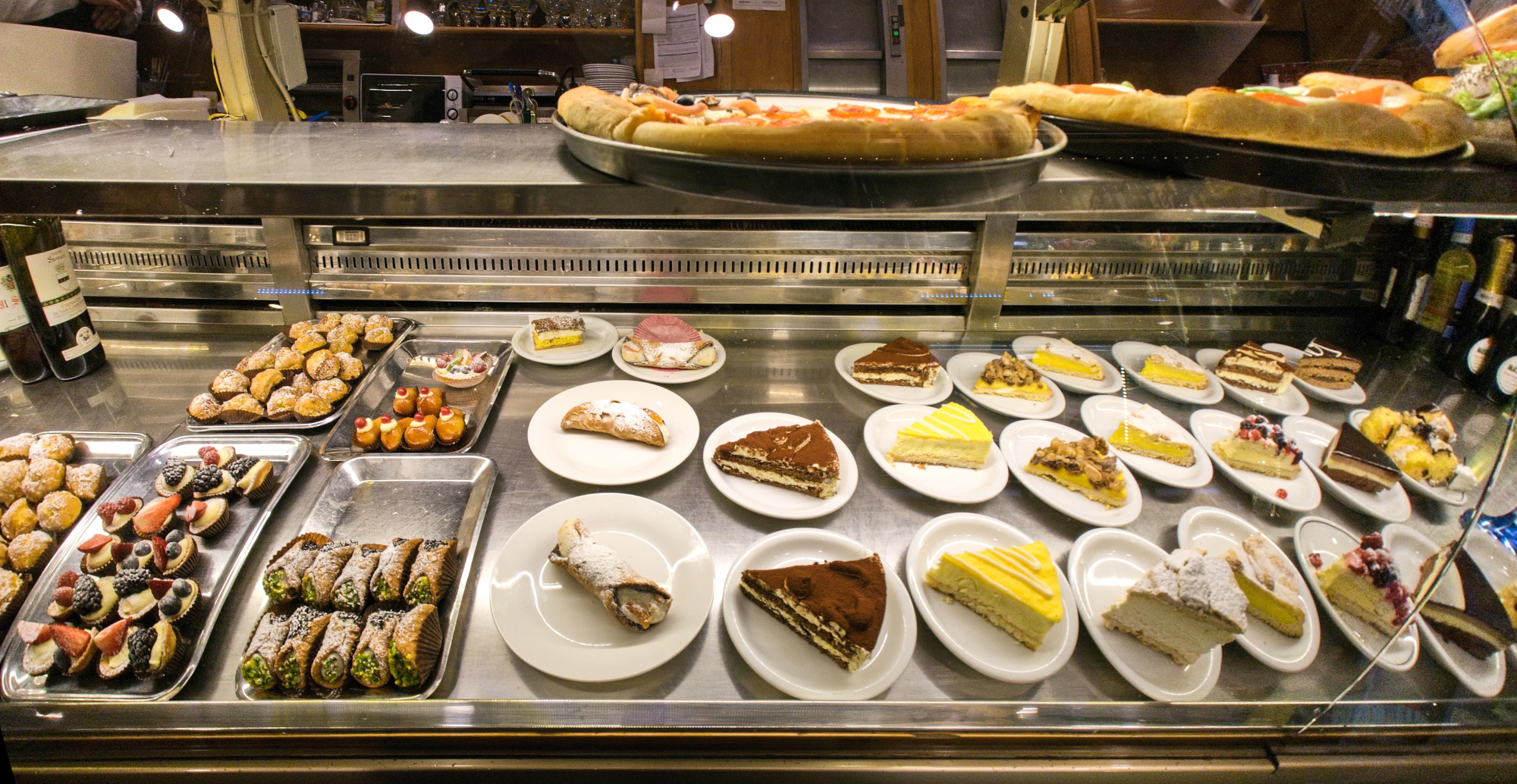
Only a few horizontal control points are needed to achieve good alignment. For this type of optimization, at least three horizontal control points are required.
Once the optimization is complete, the areas marked by green lines in the image will be perfectly horizontal.
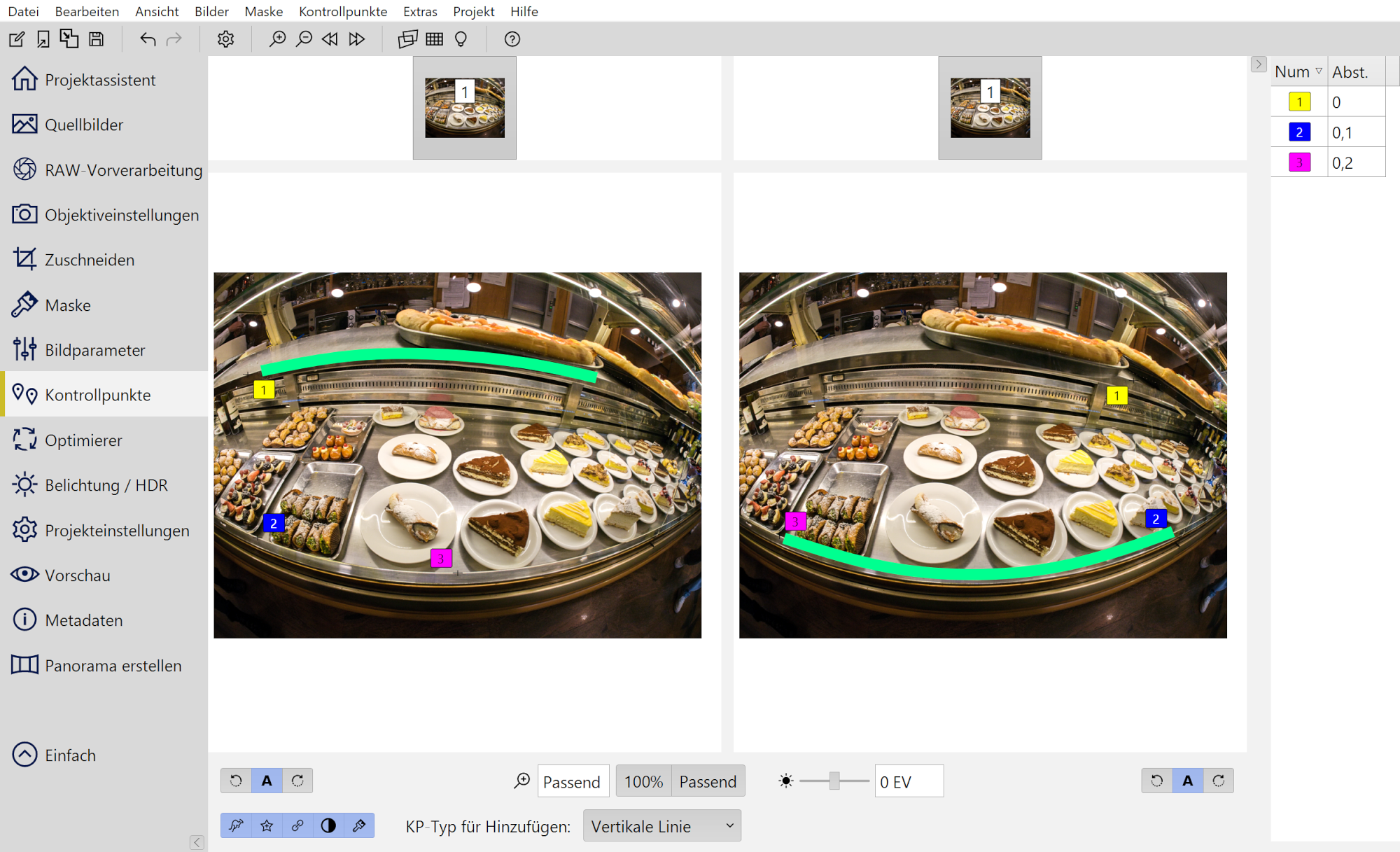
Only yaw, pitch, and roll angles need to be optimized.
Usually it gets you a perfect result.
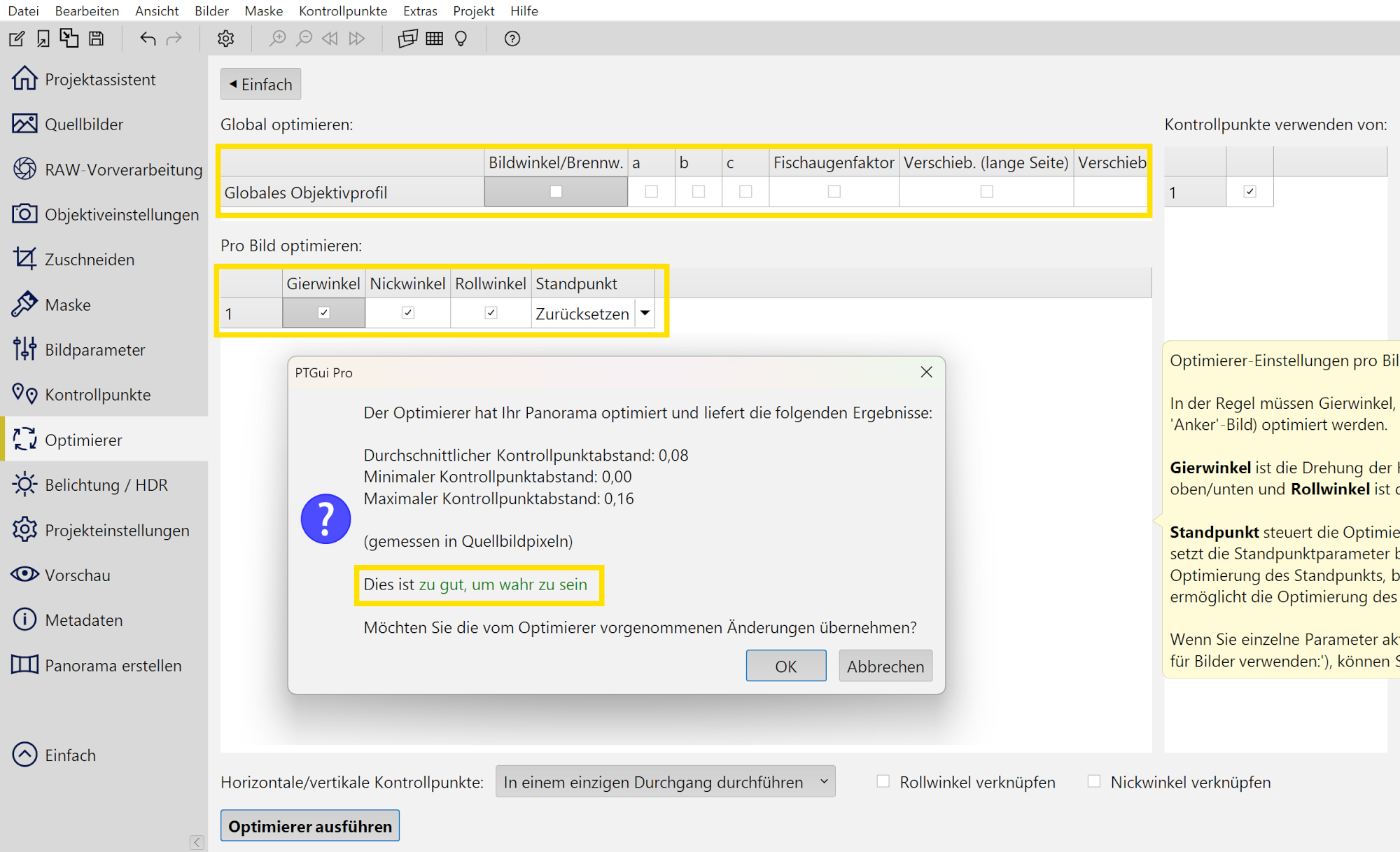
More of the same scene:
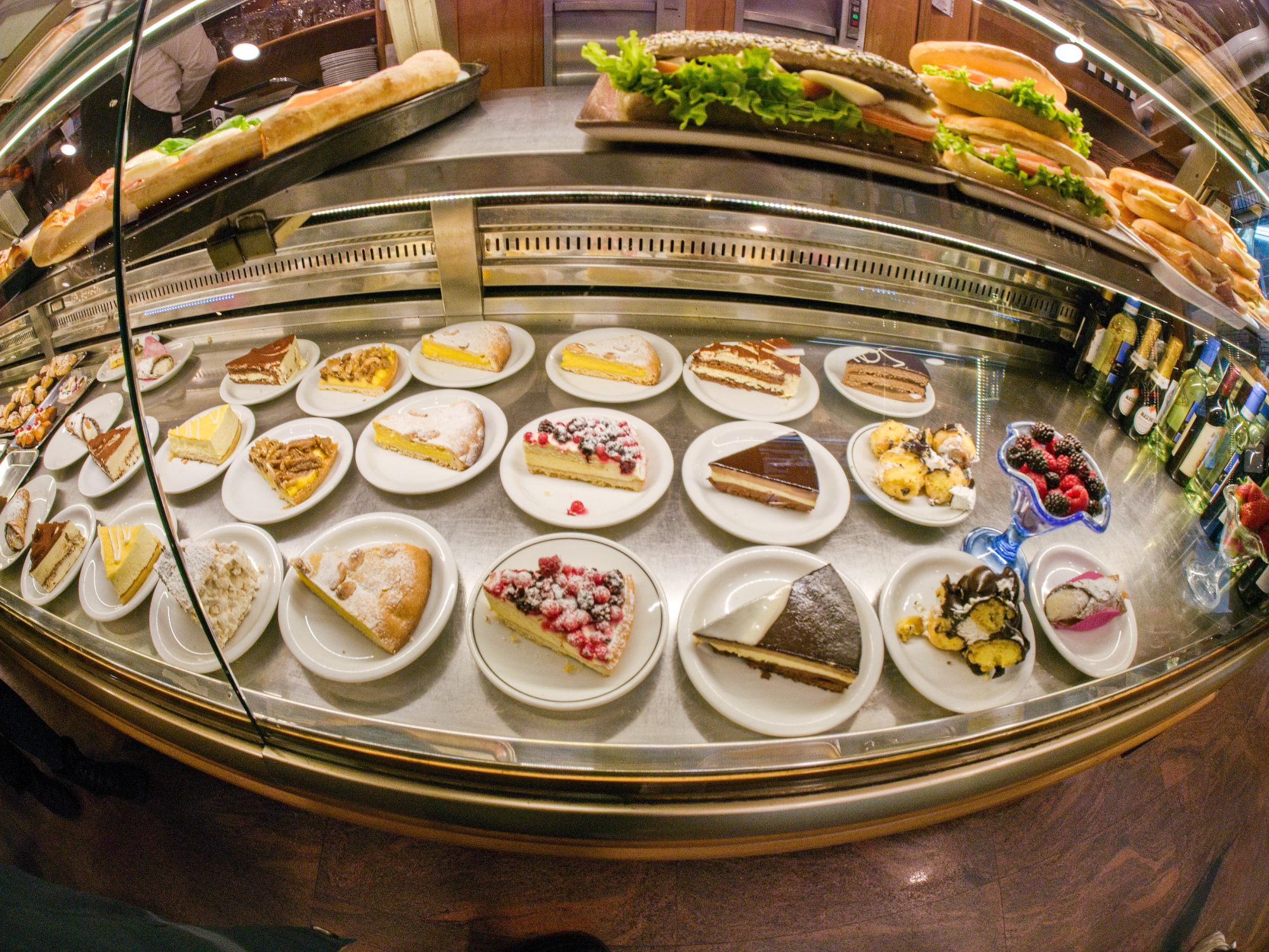
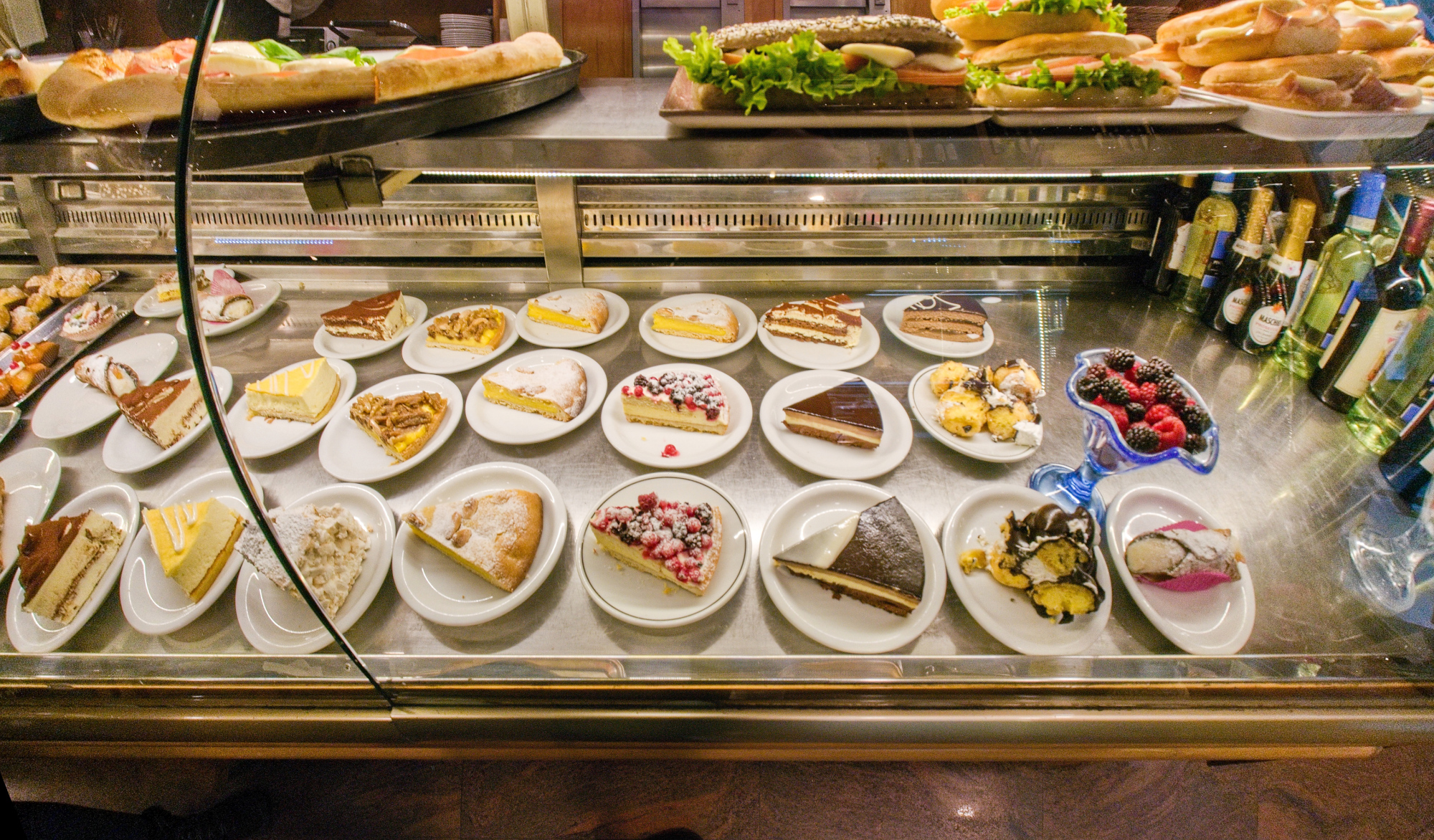
From A Day in Florence, Italy
🍰
See also Panotools projection, The Balcony Panorama, Panotools projections example and Stereographic projection.